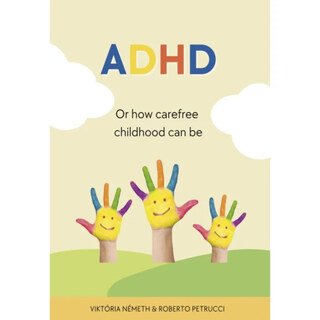Nowadays we hear and see more and more about the growing number of children with ADHD, whereas in the past, ADHD symptoms appeared during the school years, the 9-10 age group being the most likely to experience the first signs of attention deficit and hyperactivity disorder. Today parents are often warned very early, almost from the age of three, as soon as the child enters the community, leaving the home environment, that their child could have ADHD.
This is when testing begins to investigate if they really do have ADHD. If the tests confirm it, or if a specialist also identifies an ADHD problem, parents can start thinking about what kind of therapy to choose.
There are many therapies and methods to help bring the child's behaviour back to a harmonious state.
Our aim with this book is to describe the ADHD problem and its characteristics at different ages; and to highlight the effectiveness of homeopathy in the treatment of ADHD.
Most of us have heard a lot about the ADHD problem, but not everyone knows what the disorder is.
In the first part of our book, we will describe the general symptoms of ADHD; point out the symptoms that occur at different stages of life; describe the different types of ADHD; and list the associated disorders of ADHD.
We will offer ideas on how parents can use behaviour therapy at home, or teachers at school. This therapy will help us to understand and support the child with his/her altered behaviour; what tools to use in different stressful situations or when it is important to leave concentration undisturbed, and to teach the child how to use these tools.
However, ADHD is not just a childhood problem. In many cases, when a child has not been given the right support, or in cases where it is thought that ADHD has been outgrown, symptoms may yet persist into adulthood. Not at the same level as in childhood, of course - adult symptoms are more subtle - but they can make life just as difficult.
In our book, we have dedicated a special chapter to adult ADHD and its symptoms.
The second chapter is devoted entirely to homeopathy.
We describe situations where the different type signs are very characteristic. In the first chapter of the book, we talk about general ADHD types, but in the second chapter we open up these types and bring them to a homeopathic level. We will show the issues within the types, what may be the basis of the problem; what is most characteristic of the child; what is most indicative of his or her true own self, individual behaviour.
For each type, we have given a rubric suggesting how to find the symptoms in the homeopathic repertory.
In this second part, we will provide further help on how we can understand the case even better; how we can differentiate between an extroverted and an introverted character; and we will describe the most typical behavioural manifestations of the different characteristics and their rubrics in the repertory.
Just as in the first chapter we showed that ADHD has associated difficulties, in the second chapter we will show how a homeopathic approach can be used to obtain more precise and specific information about an associated problem by asking questions; and we also list the homeopathic rubrics for this information.
Towards the end of the second chapter, we present the most common homeopathic remedies in the treatment of ADHD. We have endeavoured to present the remedies as they might be encountered in an ADHD child; and in the schema in which we have presented the homeopathic approach to ADHD.
This book has been written based on many years of experience, and our aim is to provide a better understanding of the effectiveness of homeopathy in the treatment of ADHD.
Every child deserves a natural remedy.



 2.731.680 Kunden aus 193 Ländern
2.731.680 Kunden aus 193 Ländern




 Wunschliste
Wunschliste

